
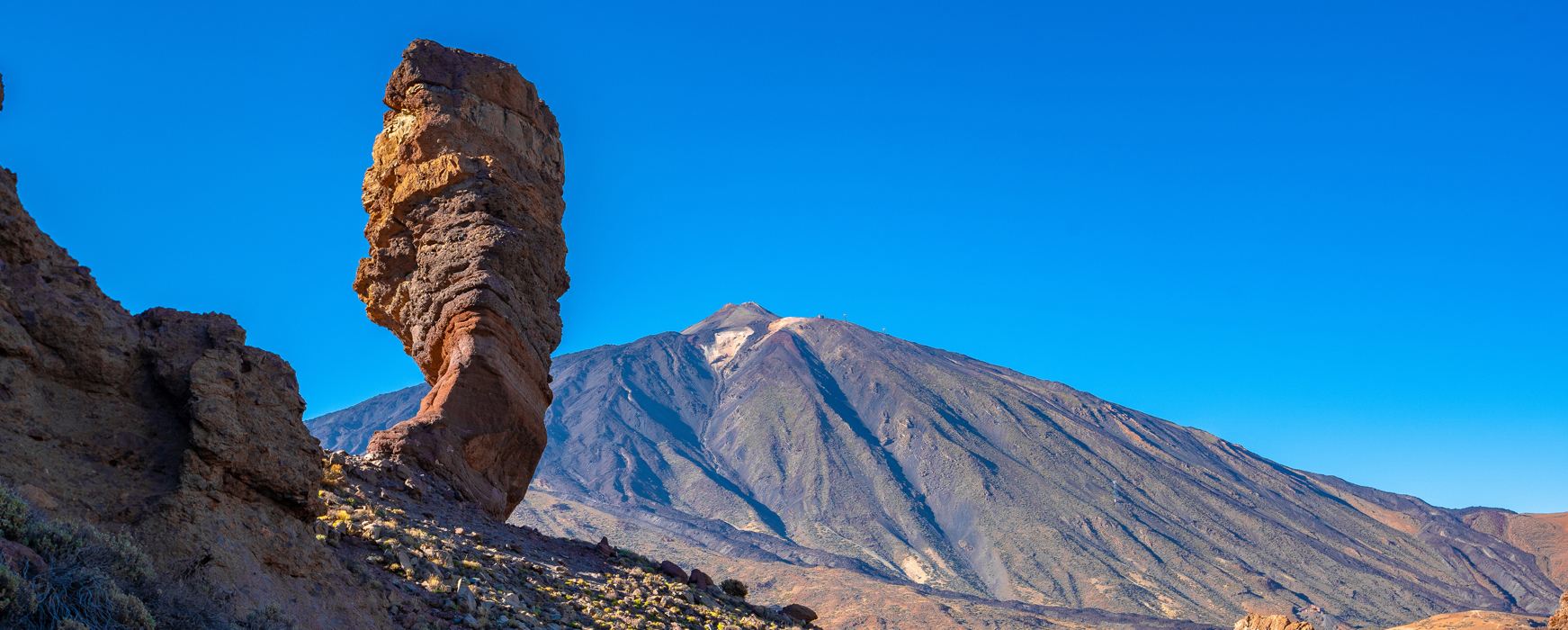
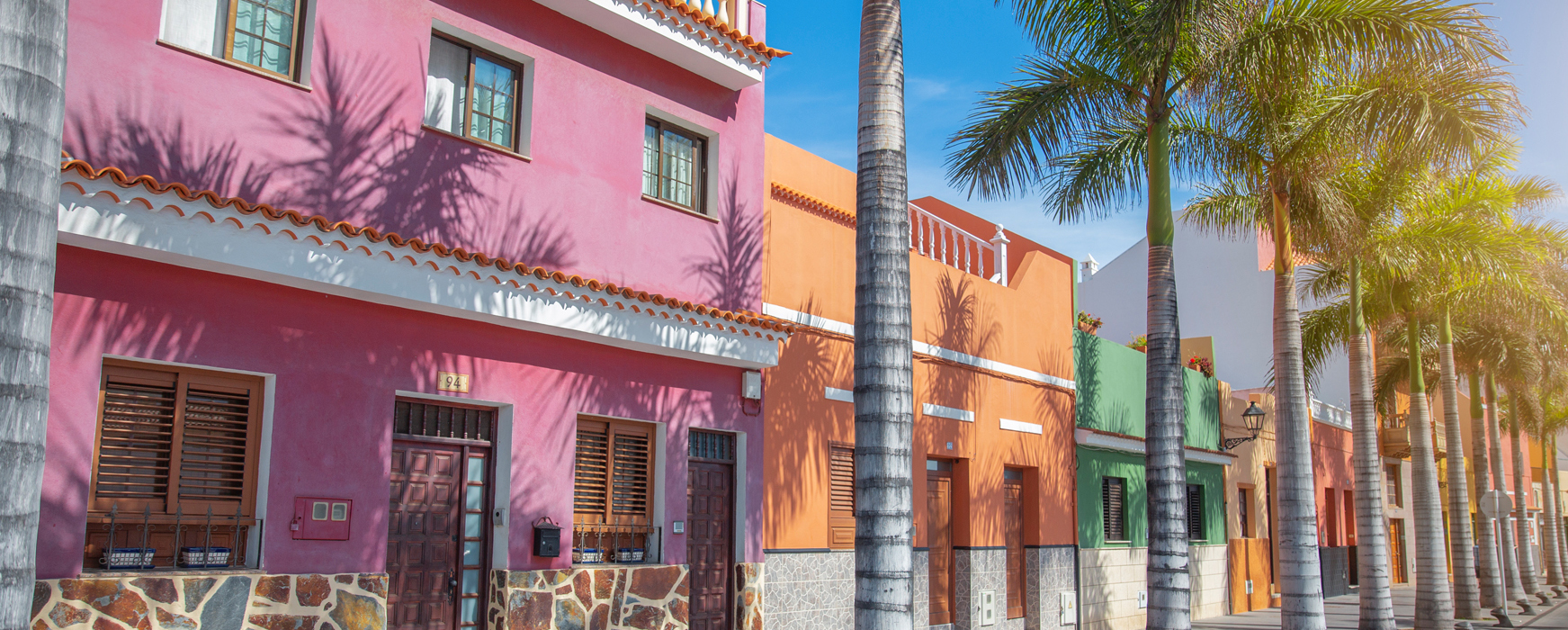
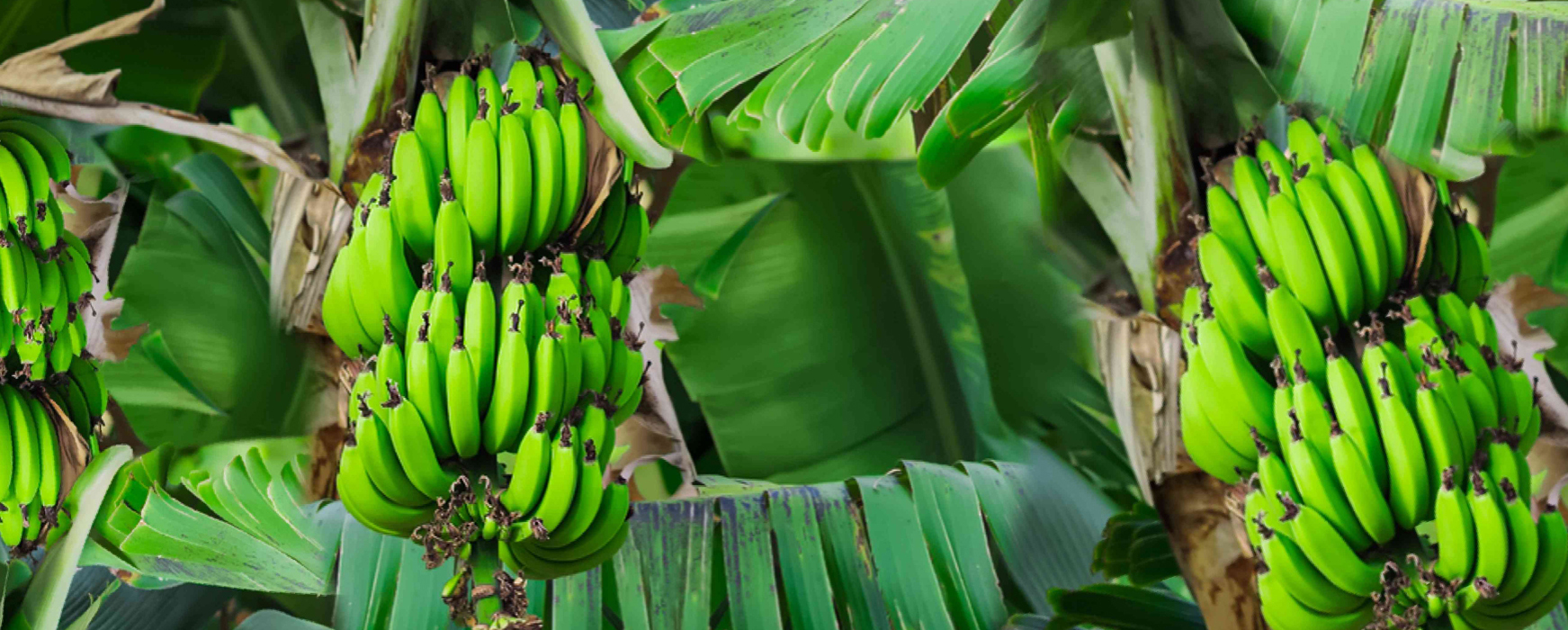
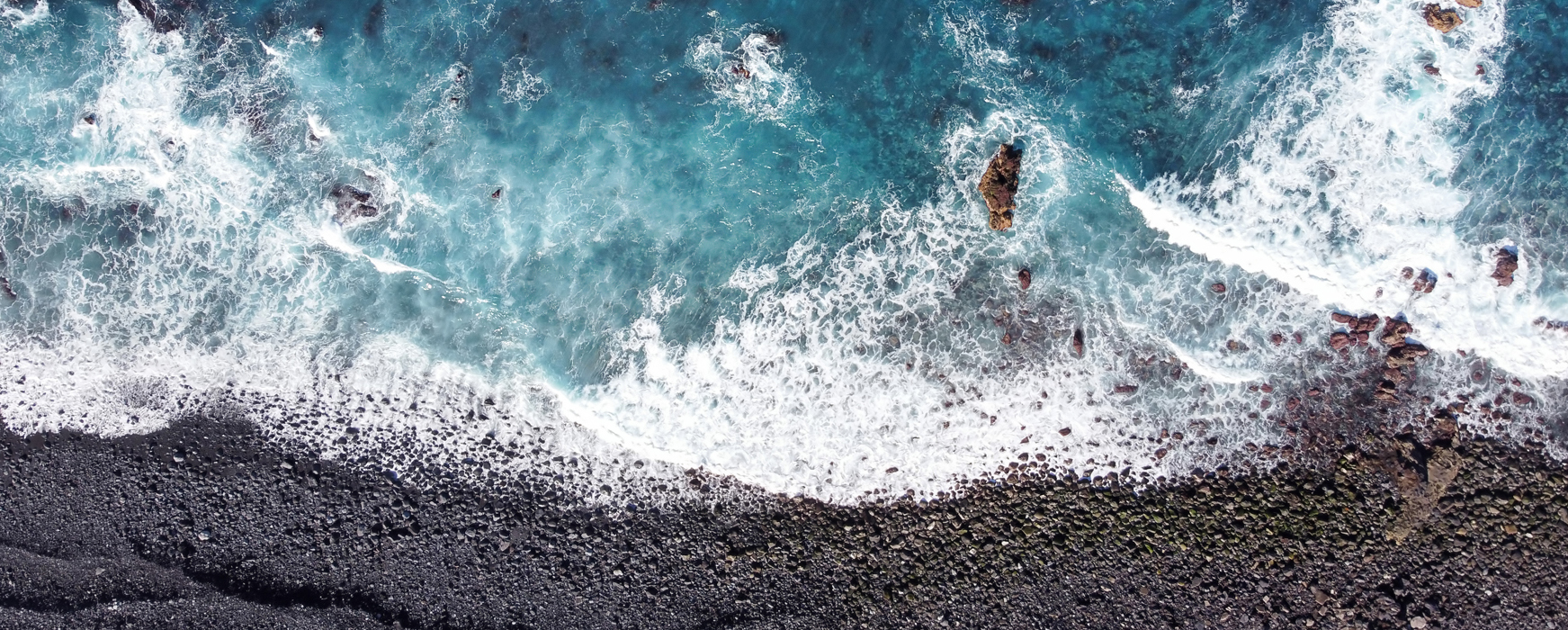
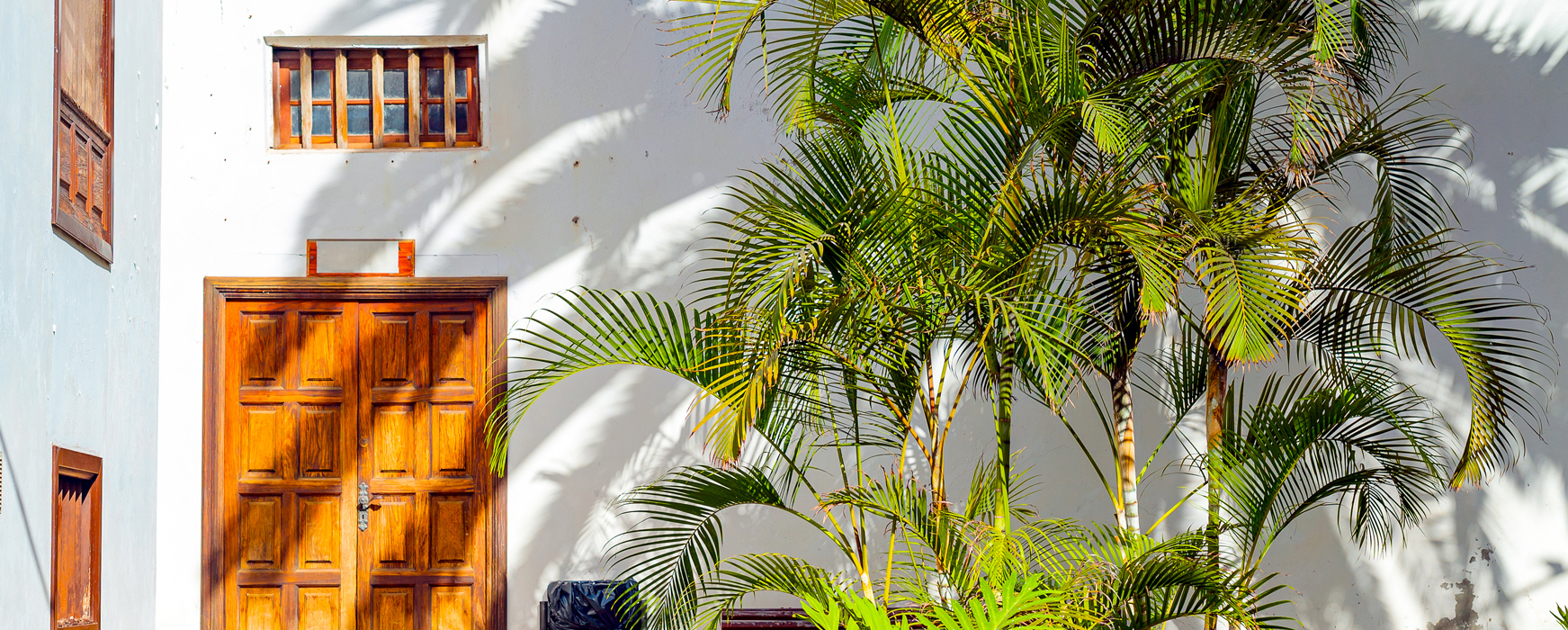

THE ISLAND OF ETERNAL SPRING
TENERIFE
Tenerife, the largest of the seven islands that make up the Canary Island archipelago is 300km from the African coast and about 1,300km from the Spanish Mainland. With anarea of just over 2000 square kilometers, it is home to the highest peak in Spanishterritory, the snow capped Pico del Teide, rising up 3,718 meters and boasts the largest volcanic crater on earth, the impressive Cañadas del Teide, which reaches approximately 50km in circumference.
Internationally known as the “Island of Eternal Spring”, any time of year is the perfect
time for a trip to Tenerife. Its geographical location puts the island right in the middle of the transition area between the subtropical and temperate zones. Coupled with the
prevailing trade winds, the resulting climate is moderate and mild with average
temperatures of 18º C in winter, and 25º C in summer.
Topographically, Tenerife as we know it today is the result of two opposing forces,
volcanism and erosion, which have sculpted the island over the last 7 million years. The
resulting rugged island terrain coupled with the variety of climates and wealth of
ecosystems has produced a territory of many different landscapes and forms, each with
its own characteristic flora and fauna, from the volcanic, Teide National Park and sheer
Los Gigantes cliffs, to the drought-resistant plains of the south and the pine forests and
tropical plantations in the north.
HISTORY
Although it belongs to one of Spain's 17 autonomous communities, Tenerife celebrates a
history and culture quite unlike that of its mainland counterparts. Classical authors have
placed Paradise, the Elysian Fields and the Garden of Hesperides here. Legend has it
that the Canary Islands are the visible remains of the sunken continent Atlantis. One of
the first reliable reports of the islands comes from Pliny who, in the 1st century, spoke of an expedition sent by Juba, King of Mauritania, which brought back giant dogs as a
souvenir of the adventure. This is the origin of the name of the islands: Canary Islands,
from the Latin “canis”. Magnificent examples of these fierce-looking native hunting dogs,
now known as the Presa Canario, are still bred on the island.
Historical evidence confirms the existence of a race of natives, known as the Guanches,
who inhabited the island up until Spanish invasion and conquest in the 15th century.
This indigenous civilisation, believed to be of North African Berber origin, was a
primitive society whose technology had yet to advance past stone-age levels.
Nonetheless the Guanches, while living in caves and utilizing simple stone tools,
developed their own religion, art, language and social structures. The remnants and
influence of Guanche culture can still be seen extensively across the island in the form of
town names, artefacts, cave paintings and rock engravings as well as in the Canarian
people’s strong sense of heritage and connection to the race.
ACTIVITES
With almost half the surface area of the island protected by government conservation initiatives, Tenerife is a nature lover’s utopia and a sunseeker’s dream. The vastly diverse island and the variety of microclimates found within such short distances of each other present endless opportunities for outdoor activities including walking, hiking, mountain and road bike riding, horseback riding, golfing, rock-climbing and paragliding - always with stunning views of sweeping valleys or the crystalline blue ocean.
Stroll to Puerto de la Cruz from your doorstep along one of the region’s most scenic
costal walks, Camino de la Costa, running straight through El Rincon. Alternatively, a
round of golf at the neighbouring 9-hole course or a game of tennis on our private court
may take your fancy.
Or you may prefer to lay a towel down somewhere along Tenerife's 269 kilometres of
coastline where the warm, clear waters of the Atlantic Ocean break upon the shores and
aquatic activities such as scuba diving, snorkelling, fishing, surfing, body boarding, wind surfing or whale watching can be enjoyed. You’ll be spoiled for choice by all there is to see and do.
GASTRONOMY
The kitchen is seldom used since our guests take pleasure in indulging in the numerous first class restaurants nearby. Take your pick from traditional Spanish to international flavours from the east and west, all located within a 15-minute drive from the villa.
Savour a typical Canarian meal at one of the North’s most popular restaurants, situated
conveniently at the top of our access street. Indulge in an evening of gourmet dining and
taste famous Serrano ham, award wining local cheeses and the finest wines Tenerife has
to offer. Or sample the delights of a Canarian “guachinche”, a cheap and authentic local
restaurant, where delicious homemade food is served and “vino de la casa” flows like
water.
For those times you prefer to be the chef, look no further than the charming town of
Puerto de la Cruz. Located 6km to the east of El Rincon, its port village heritage can still be easily seen in the little blue and white fishing boats bobbing in the sea and berthed to the pebbly shore. Here you can buy the local catch of the day, so fresh it almost swims to the table. Major supermarket retailers provide an array of both local specialities and familiar international products, while food markets offer locally grown organic produce.

Copyright 2024© VILLA PRECIOSA | Privacy Policy | Cookies | Web development by proAdeon Sistemas